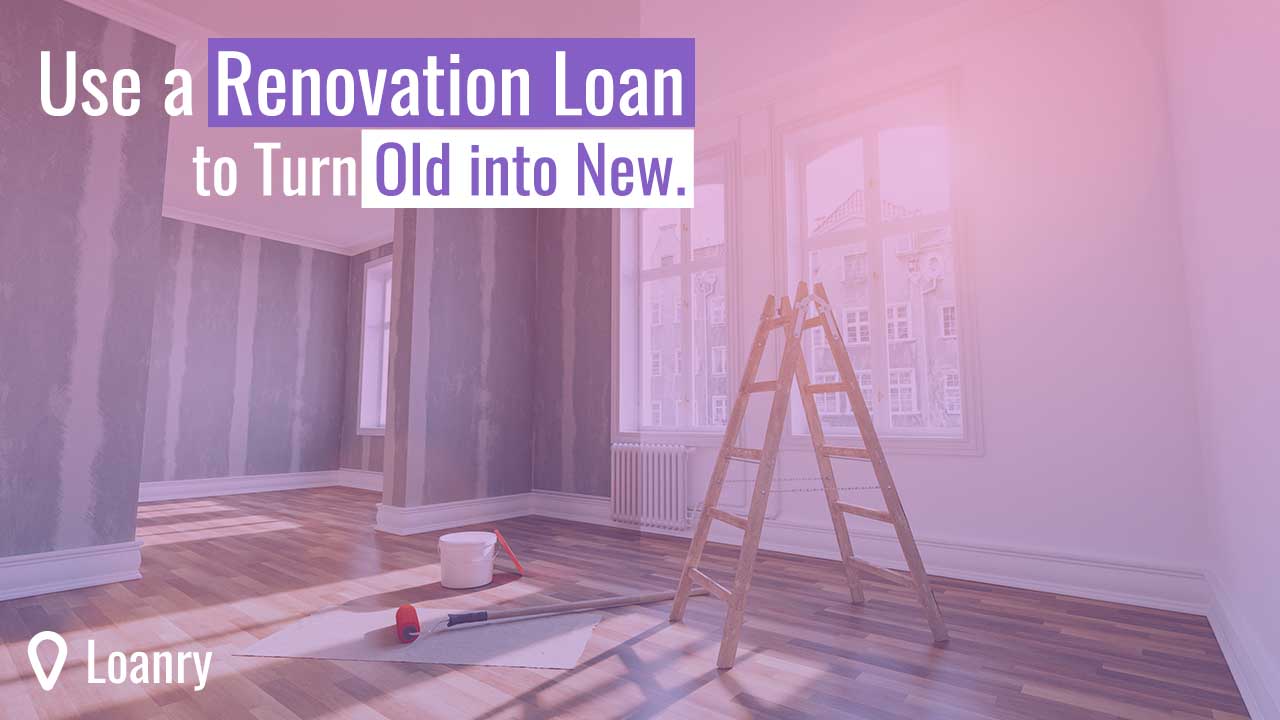
Home renovation loans are financial products that homeowners use to embark on a home improvement project. These are the ideal types of loans to renovate and fix up a home.
After the renovation has been completed, the goal is to increase the value of the home. However, when you apply for the loan the ‘after renovation value’ is what the lenders use to know the amount of loan you should receive rather than using the existing home value. In so doing, the homeowner gets credit for the increased home value of the projected renovation value.
Home Improvement Vs Renovation
We know these terms may be a little confusing, given that some lenders offer these products as potential home improvement loans. However, home improvement loans are rebranding unsecured loans with higher interest rates, limited loan amounts and shorter finance terms. Therefore, it is safe to say that these loans should not be considered renovation loans. They are different and the only loan types that offer homeowners a credit for the home’s future value. When the home’s after renovation value is used by the lender, this means that your loan rate will be lower because of the loan to value ratio set by the lender. These types of loans fall into several categories:
- Construction Loans
- FHA 203K Loans
- Home Equity Loans
- Fannie Mae Homestyle Loans
The first step to take in seeking one of these types of loans is to gather as many details about your project. Approach the lender and see if you are eligible for approval. The lender will go through the details that you provide to see if your project is right for such a loan. Schedule a phone call or send an email to learn more from your potential lender.
Non-Traditional Home Equity Loans
Let us look at the different types of renovation loans. And let’s see which ones are more common among homeowners for their home’s improvement. This home equity loan is specifically for renovating. It is a combination of a home equity loan with a construction loan. With this loan, you don’t have to do a refinance. And the funds don’t have to be disbursed directly to the building contractor via a draw schedule or inspection process. Homeowners can borrow against the after renovation value without refinancing and do so at the lowest interest rate.
This loan type is best for people who are buying a new home or renovating their home. If you are buying a home that needs renovating, you would have to obtain the property using the traditional mortgage process. And then apply for a loan once you close the first loan. The fees associated with closing costs for the loan will be less, and you will be able to borrow up to $500,000 and as low as $20,000. One disadvantage is that the loan will have higher payments, since the maximum term is 20 years in comparison to a 30-year loan, which carries lower monthly payments due to the extended period of 10 years.
Construction Loans
The single-close construction to permanent loans or CTP as they are called is able to convert a permanent and new first mortgage, replacing the current mortgage. It is called “Single Close” because the borrower only needs to sign just a set of documents and pay one closing cost. It is like doing a cash-out refinance procedure based on the value after renovation is done. These types of loans are disbursed to the contractor and not the homeowner. The contractual receives funding on intermittent scheduling and an on-site inspection is required by the lender.
The monthly payment for these loans is low since payments are spread out over a 30-year period. The rates are usually decided according to the market rate of the first mortgage. You are allowed to borrow more than $1 million. You can convert this construction loan to a traditional fixed 30-year loan. Some contractors don’t like to take construction loans projects because of the disbursement scheduling and inspections.
Fannie Mae HomeStyle Loan
This type of renovation loan falls into the category of construction loan and so does FHA 203K loans. But this one is insured by a government entity known as Fannie Mae. There are pros and cons of this loan. One of the advantages is the ability for the homeowner to borrow as much as 95% of the home’s future value after renovation. However, private mortgage insurance or PMI has to be paid once the loan goes over 80%. In comparison, private lenders put a limit on renovation loans. Borrowers cannot go over the 80% threshold. On the other hand, this type of government loan is not as restrictive as that of the private lender. In other words, you don’t need a high credit score to qualify. One disadvantage is that the interest rate is high, conforming to the area where the house is located.
Finding the Right Lender
Whether you want to borrow a loan so you can remodel a room in your home such as your kitchen, living room, or bathroom, the option that you select could have a huge effect in determining the lender, the interest rate, and the monthly premiums, as well as whether you have to do refinancing of your original mortgage.
A Comparison
Let us do a comparison between a renovation loan and the traditional home equity loan.
The reason for all of this is that the homeowner applying for the home equity loan can only use its existing value while the borrower for the loan can use the after renovation value. That is the most distinctive difference between the two loans.
The Loan Amount
The home equity loan allows the homeowner to borrower up to 805 of the home’s current value. Therefore, if you were to use the existing value of $500,000, then 80% of that would be $400,000. However, the outstanding balance of the mortgage is $350,000. Therefore, the family would only be able to borrower $50,000 for the renovations ($400,000 – $350,000).
Let’s do a comparison for the home’s future value of $750,000 using the same 80%. The amount would be $600,000. If the outstanding balance on the mortgage were still $350,000, then the loan amount for the renovation would be $250,000 ($600,000 – $350,000).
When the future value is taken into consideration by the lender, the homeowner would be able to finance and complete a large renovation project with the $250,000 allotted amount. They would not have to do a mortgage refinance and possibly lose their current low-interest rate.
Conclusion
If you want to take on a large renovation project for a home you have had for years, then you stand the chance of being able to use your home equity. However, in the case of a renovation loan, your equity is not the only aspect of whether you qualify for a loan or not. The lender also looks at the perceived future value and grants you a loan relying on those facts. This factor would increase your borrowing potential and power by more than eleven times while making sure that your interest rate is lower. If you want to learn more, go directly to the Goalry Platform and head over to the Loanry Store.

Cheryline Lawson is a personal finance writer who lives in Fort Lauderdale, Florida with her husband and two boys. She has worked as a mortgage broker and loan processor in the most recent past. She shares a lot of her experiencing in financial planning, real estate investing and budget advice with national media outlets like GoBankingRates, Intuit, Bustle, Buzzfeed and CBS News. Ms. Lawson is a graduate of Broward College in Florida. She came into her own as a mortgage broker after realizing so many people need help to get into their first home. She has a passion for helping others, especially those who need financial advice to use in their daily lives.
